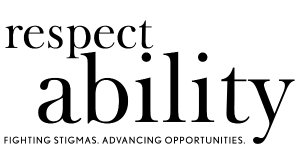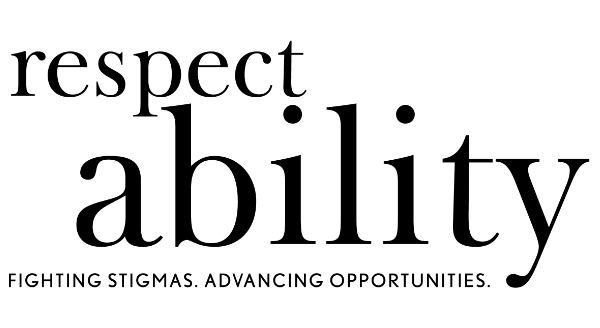For many individuals with disabilities who are talented, capable, and want to be employed or start a business of their own, not knowing about Social Security work incentives may lead to the false belief that going to work would necessarily cause them to lose the very benefits they depend on to pay for their daily needs. The good news is that it’s possible to retain these benefits while pursuing employment or self-employment, and these work incentives can make that happen. Having a job or starting a small business may eliminate the need for such benefits. As employment success is attained and maintained, these individuals may serve as noteworthy examples of the heights that are truly possible. Go for it!
Part I: Fostering Greater Independence from Social Security Benefits
Many students and job seekers with disabilities receive federal government benefits such as Supplemental Security Income (SSI), which is based on financial need and Social Security Disability Insurance (SSDI), which is based on your employment history and the FICA taxes you paid. According to the 2019 Annual Report on People with Disabilities in America, the employment rate among people with disabilities ages 21 to 64 is only 38.1%. This figure need not remain so low, especially when taking into account the fact that there are work incentives that can help people return to work without losing their benefits. SSA has a series of webinars that can help you better understand work incentives.
In addition “The Benefits Planning Query (BPQY) is a tool used by Area Work Incentive Coordinators (AWIC), the Plan to Achieve Self-Support (PASS) Cadre members, advocates, beneficiaries, and other individuals. The information contained in a BPQY provides customized information on SSA’s employment support programs for beneficiaries with disabilities who want to start or keep working. Analysis of a beneficiary’s disability and work status is the first step when planning a successful return to work.”
SSDI recipients may not work at a level beyond what is referred to as Substantial Gainful Activity (SGA). In 2021 this amounts to $1310 per month and $2190 per month for individuals who are blind. As an incentive to encourage people with disabilities to try to work, SSA allows for a nine-month trial period during which recipients continue to receive full SSDI benefits. For those who are self-employed, working 80 hours a month counts as a trial work month. After completing the trial work period, SSDI recipients will receive their full benefits for any month they do not earn the SGA amount. This three-year extension is called the extended eligibility period. During this time and potentially longer, SSDI recipients may continue to keep their Medicare. Individuals who are working at minimum wage jobs, who eventually see increases to their wages, may offset the increase by decreasing the number of hours worked, thus preventing SGA from being triggered. Even under such circumstances, optimizing work opportunities would raise personal income more than what would occur if they didn’t work at all. It’s in your best interest either to optimize work, or to engage in self-employment, depending on what works best for you.
Even after SSDI payments stop because of working at the SGA level, Social Security beneficiaries may have SSDI reinstated within five years following their last receipt of benefits if their disability makes continued work impossible. This is another incentive for people with disabilities to contribute their talents and abilities to the broader economic lives of their communities. Breaking this down is a useful article entitled How to Keep SSDI Benefits When You Start a New Job. It covers critical topics including how to keep SSDI benefits, the importance of securing help, and the value of finding a job. Another helpful resource is Disability Benefits 101, which includes “tools and information on employment, health coverage, and benefits” and features benefits calculators for different states.[1]
According to SSA’s Redbook, SSI recipients may continue to receive income support and Medicaid once they get a job. SSA considers that a disability continues until a person medically recovers, even if they work. For those who begin earning income SSA uses a specific formula to calculate deductions from SSI benefits. Check out SSA’s Supplemental Security Income (SSI) Spotlights for answers to your questions about many topics including living arrangements, the PASS, and continued Medicaid eligibility for people who work. Here’s a quick summary of the process for determining deductions from SSI cash benefits:
- Step A: Determine monthly unearned income, defined as “all income that is not earned such as Social Security benefits, pensions, state disability payments, unemployment benefits, interest income, dividends, and cash from friends and relatives.”[2] Also determine monthly earned income, defined as “wages, net earnings from self–employment, certain royalties, honoraria, and sheltered workshop payments.”[3]
- Step B: From unearned income, subtract $20, which is called the “General Income Exclusion.”[4]
- Step C: Subtract $65 from earned income, which is considered the “Earned Income Exclusion.”[5]
- Step D: Determine “Countable Earned Income” by making deductions, depending on whether an individual has a disability generally or if the person is blind.
- For People with Disabilities in General: Deduct “Impairment-Related Work Expenses (IRWE)” from the earned income figure from Step C.[6] Examples include expenses such as “wheelchairs, certain transportation costs, and specialized work-related equipment.”[7]
- For People who are Blind: Deduct “Blind Work Expenses” from the earned income figure in Step C.[8] These expenses “do not need to be related to blindness and [may] include earned income used to pay income taxes, meals consumed during work hours, transportation costs, or guide dog expenses.”[9]
- Step E: Take the countable earned income from Step D and divide it in half.
- Step F: Add the total from Step B to the total of Step E to arrive at the total amount to be deducted from the cash benefit.
Even if SSDI recipients earn a monthly income that reaches the SGA threshold of $1310 for people with disabilities generally or $2190 for people who are blind in 2021, it’s possible for SSA to consider “subsidies” and “special conditions.” “A subsidy is the extra amount of wages an employer pays an impaired individual for services over the reasonable value of the actual services performed.” Special conditions include close and continuous supervision or on-the-job-coaching, and substitution during which the job coach performs part or all of the individual`s job duties. People with disabilities who receive subsidies or who work under special conditions should also make sure to provide this information to SSA so that it can determine the related value. This might keep them under the SGA limit even if the dollar amount they receive is higher than the SGA threshold. The more thorough the documentation submitted, the smoother the process will be to help ensure that monthly benefits aren’t interrupted until full economic self-sufficiency is achieved. As people with disabilities begin earning income, it’s vital that they stay in communication with SSA to minimize the possibility of an overpayment. SSI and SSDI recipients’ expenses should be reported within six days of the month following income having been earned.
If recipients cannot receive SSI payments because their earnings are too high, their eligibility for Medicaid may continue while they are working. Be sure to check out SSA’s Ticket to Work website for more information on the “safety nets” that can help you keep your Medicaid or Medicare if you go back to work. In most cases if recipients lose their jobs or are unable to continue working, they can begin receiving payments again without filing a new application. In addition, your monthly SSDI and/or SSI payments may continue while you’re receiving vocational rehabilitation services.
Though the process described above may seem daunting at first, the bottom line is that persons with disabilities who pursue employment and/or entrepreneurship may benefit financially since their benefits may continue while they are working to become financially independent. People with disabilities should not feel alone in making a successful transition to work. The Work Incentives Planning and Assistance (WIPA) program “provides in-depth counseling about benefits and the effect of work on those benefits; conducts outreach efforts to beneficiaries of SSI and SSDI (and their families) who are potentially eligible to participate in federal or state Work Incentives programs; and works in cooperation with federal, state, and private agencies and nonprofit organizations that serve SSI and SSDI beneficiaries with disabilities.” SSA has a Find Help tool to assist beneficiaries with finding the WIPA program closest to them. SSA also sponsors virtual Work Incentive Seminar Events (WISE) on the fourth Wednesday of each month at 3 p.m. ET. These seminars provide basic information on Social Security work incentives including the Ticket to Work program. For more information about returning to work while receiving Social Security disability benefits, visit this resource page on SSA’s website where you’ll find information in both audio and PDF formats as well as in languages other than English.
Part II: Leveraging the Power of ABLE Accounts
It’s imperative that job seekers with disabilities and their advocates learn about the Stephen Beck, Jr., Achieving a Better Life Experience Act of 2014 (ABLE), “enacted to help blind or disabled people save money in a tax-favored ABLE account to maintain health, independence, and quality of life.” This law lets people with disabilities put money aside to pay for their disability-related expenses without jeopardizing their eligibility for SSI because their assets may be too substantial. Learn how ABLE accounts may be used most effectively and the opportunities for enhanced economic self-sufficiency become even more clear. This video from the ABLE National Resource Center can help you better understand this law. Here are several things worth knowing about ABLE accounts:
- Eligibility: To be eligible to establish an ABLE account, (1) blindness or disability must have occurred before age 26 and (2) the person must be entitled to benefits based on blindness or disability under Title II or Title XVI of the Social Security Act.
- Contributions: “These are not tax deductible and must be in cash or cash equivalents. Anyone, including the designated beneficiary, can contribute to an ABLE account. An ABLE account is subject to an annual contribution limit and a cumulative balance limit.”
- Qualified Expenses the Account May Cover: Examples include basic living expenses, health and wellness,housing, financial management, transportation, education and training, assistive technology, and legal fees.
- Limited Exemption: “[T]he first $100,000 in [the] ABLE account would be exempted from the SSI $2,000 individual resource limit. If [the] ABLE account exceeds $100,000, [the] SSI benefit payment would be suspended until [the] account falls below $100,000. It’s important to note that while, eligibility for a benefit payment is suspended, this has no effect on [your] ability to receive or be eligible to receive medical assistance through Medicaid.”[10]
Part III: Rallying Additional Support Systems
Through the network of American Job Centers, people can benefit from a broad range of employment services and help with job searches and resume preparation. All stakeholders involved with disability employment, including the American Job Center network, people with disabilities, and employers, may connect with the disability and employment community through Workforce GPS. Disability Program Navigator grantees have specific tools and resources to assist them in providing accessible services. Vocational rehabilitation counselors have access to technical assistance to help them implement the provisions of WIOA.
[1] In addition to a series of useful tools that assist benefits recipients nationally, benefits estimators are available for individuals residing in Alaska, Arizona, California, Kentucky, Michigan, Minnesota, Missouri, New Jersey, and Ohio. See Disability Benefits 101, https://www.db101.org.
[2] “Supplemental Security Income (SSI),” Social Security Administration, https://www.ssa.gov/ssi/text-income-ussi.htm.
[4] “Red Book,” Page 36, Social Security Administration, https://www.ssa.gov/pubs/EN-64-030.pdf.
[5] “Earned Income Exclusion,” Social Security Administration, https://www.ssa.gov/redbook/eng/ssi-only-employment-supports.htm#1.
[6] “Work Incentives – Detailed Information,” Social Security Administration, https://www.ssa.gov/disabilityresearch/wi/detailedinfo.htm.
[10] The Social Security Administration itself cites to the LEAD Center, led by Social Policy Research Associates and the National Disability Institute, fully funded as the WIOA Policy Development Center by the U.S. Department of Labor’s Office of Disability Employment Policy. See https://choosework.ssa.gov/blog/2017-11-20-yawa-able-accounts-what-you-should-know.









